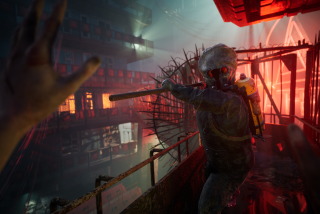Game Makers Are Playing It Safe
- Share via
There’s a familiar ring to this year’s crop of video games.
With “Half-Life 2,” “Doom III” and “Gran Turismo 4” on prominent display this week in Los Angeles at the Electronic Entertainment Expo, the $25-billion global games industry is leaning hard on past successes to build future hits.
“It’s a year of sequels,” said Steven Koenig, an analyst with market research firm NPD Group. “That’s not to suggest there won’t be new content, but the more high-profile games are going to be sequels.”
The reason: Although the rewards have gotten bigger in this fast-growing industry, so have the risks.
For publishers, the cost of making and marketing games has ballooned, making flops more expensive. Retailers, facing an uncertain economy, have tried to play it safe by favoring brands with good track records. And gamers, deluged with thousands of new titles in recent years, have turned to names they recognize.
So, aside from sequels, the industry also is latching onto movie and television licenses as a way of lowering its marketing risks.
“Enter the Matrix” and “Terminator 3: Rise of the Machines” are two examples from Atari Inc., which changed its name last week from Infogrames Inc. THQ Inc.’s “Finding Nemo” is the first of three game series based on upcoming movies by Emeryville, Calif.-based Pixar Animation Studios. And Activision Inc. is hoping to duplicate its success last year in selling games based on the “Spider-Man” movie. The Santa Monica publisher’s newest title, “X2: Wolverine’s Revenge” is based on the movie “X2: X-Men United.”
“There will be more links between games and the silver screen this year,” Koenig said.
Taken together, sequels and licenses demonstrate growing conservatism among game publishers, even as the industry is poised for record sales this year. That’s partly because of painful lessons learned last year, when publishers unleashed a record number of titles and spent hundreds of millions of dollars to market them, only to see a handful of games make money. Most lost money.
“Even though the market grew 20% last year, the number of titles grew 50%,” said Alison Locke, vice president of THQ. “That made it challenging for margins.”
For struggling players such as Japan’s Sega Corp., the losses drained operating cash flow and nudged them closer to potential mergers or sales of their companies. Established players retooled their game plans by killing low-priority or high-risk projects.
“As production and marketing costs have risen along with retailer expectations, second- and third-tier companies are increasingly becoming marginalized,” said Bobby Kotick, Activision’s chief executive. “For Activision specifically, this is a year when we’re focusing on a smaller number of titles of higher quality.”
Kotick said Activision would release 15% to 20% fewer games this year than in 2002. Calabasas-based THQ said in February that it would kill 20 titles, or about one-fifth of its lineup.
To boost sales, game developers are banking on Microsoft Corp. as well as Japanese companies Sony Corp. and Nintendo Co. to cut the prices of their consoles by as much as $50. Sony’s PlayStation 2 currently sells for $199.99, the same retail price as Microsoft’s Xbox. Nintendo’s GameCube is $149.99. But at $150 and $100, it’s likely that more consumers would buy the machines, thereby expanding the market for game publishers.
In the U.S., 17.2 million households have a PS2, 5.1 million have an Xbox and 4 million own a GameCube, according to NPD. By the end of this year, those numbers are projected to grow to nearly 27 million households with PS2s, 9 million with Xboxes and 6.6 million with GameCubes, according to International Data Group.
Price cuts could be in store for software, too.
“The best games will continue to command premium prices,” Kotick said. “But the others will have to drop prices more quickly. It used to be that you could go from $49.95 to $39.95 as an intermediate step. Now that’s not the case. The next step is going to be $29.95 or even $19.95.”






